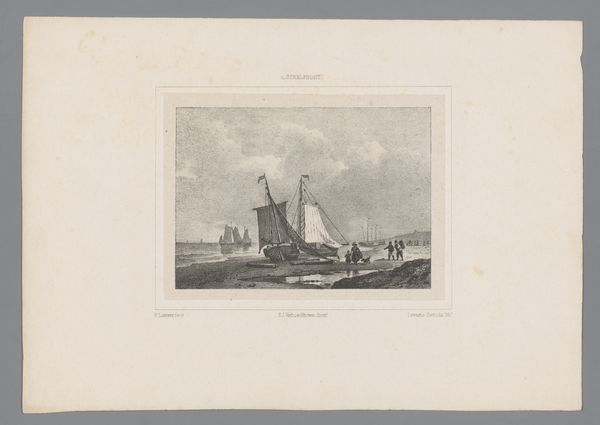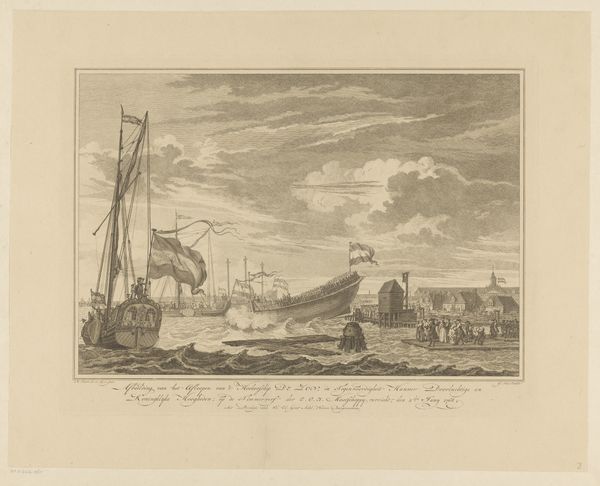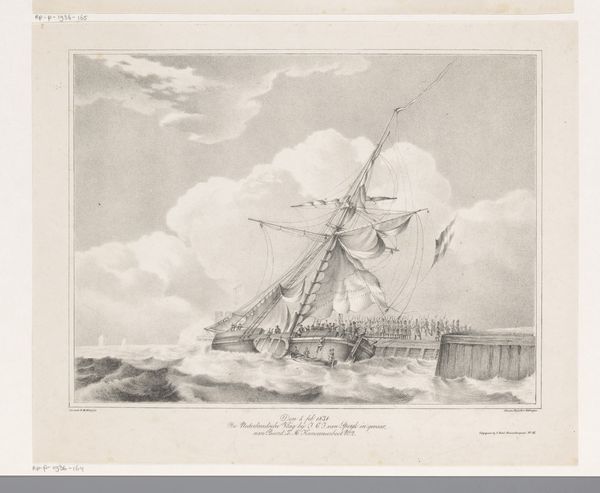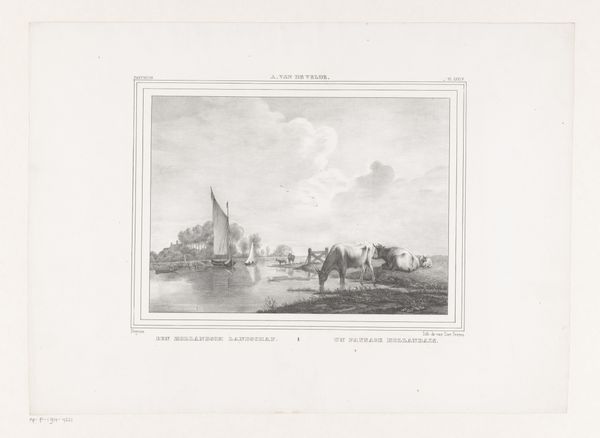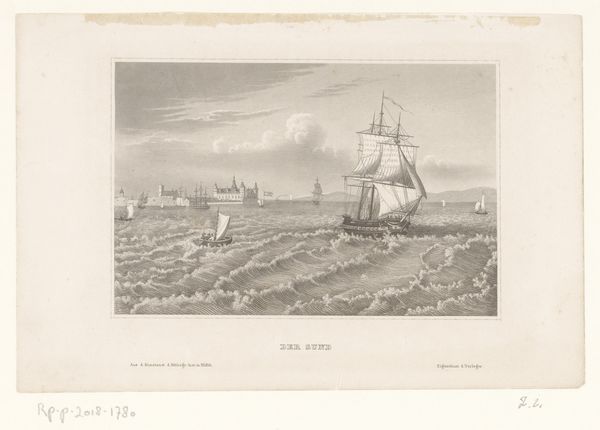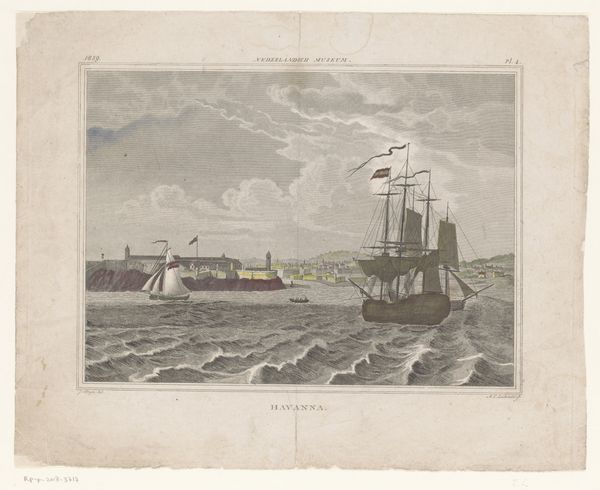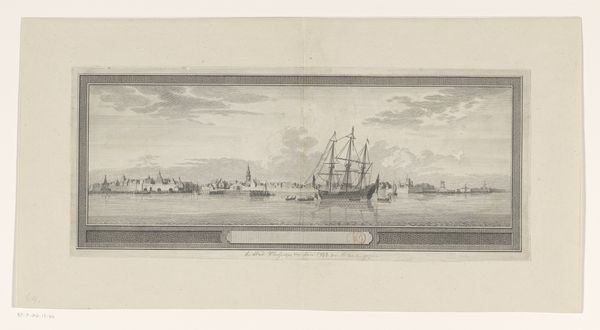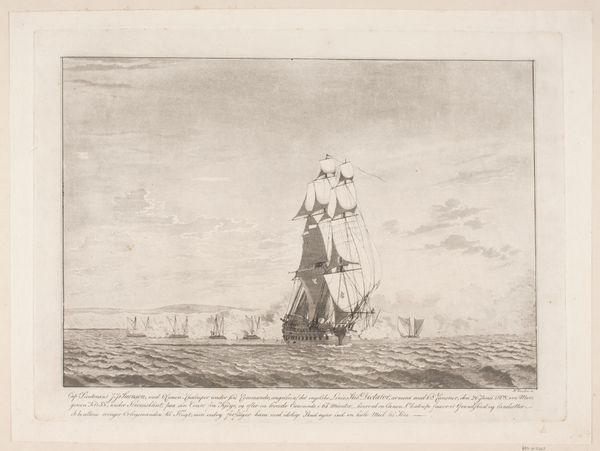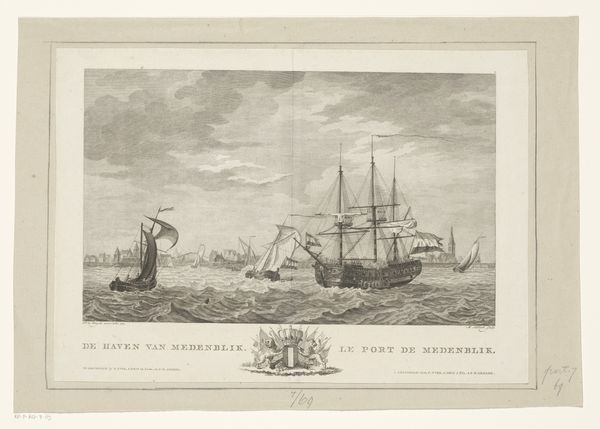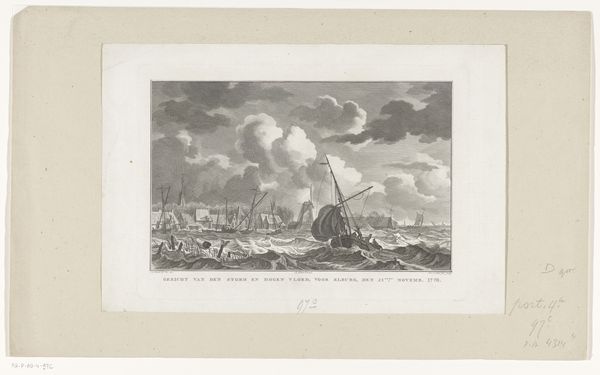
print, engraving
#
baroque
# print
#
landscape
#
cityscape
#
history-painting
#
engraving
Dimensions: height 170 mm, width 275 mm
Copyright: Rijks Museum: Open Domain
Curator: Ah, I am immediately struck by a melancholic stillness in this piece. It is like a silent record, meticulously etched in time... Editor: This engraving, "Gezicht op de Spaanse nederzetting Pensacola in de Golf van Mexico" or "View of the Spanish Settlement Pensacola in the Gulf of Mexico" if you will, an anonymous piece dating sometime between 1743 and 1769, offers us just that – a carefully constructed viewpoint on colonial expansion. Curator: Exactly! I see a tiny community hugging the shoreline. It's as though the artist tried to capture a tranquil facade over what had to be a wild, and probably not so pretty reality. I wonder if that sky knew it was foreshadowing so much… Editor: Absolutely, the work presents a landscape and a cityscape – a potent juxtaposition of untamed nature and imposed order, which speaks volumes about colonialism's drive to conquer, manage and represent. This image comes to us from the Baroque period, with its highly decorative aesthetic conventions and its connection to representing power and order. The perspective is so clearly shaped to show not just what they found, but what they *built*, in a way that suggested stability. Curator: Built and…imagined. You can almost smell the salt and the damp earth. The little sailboats and rows of figures lined up like toy soldiers...it feels fragile. Did they feel the weight of all of it, all that endeavor resting in their hands? Editor: Fragility, yes. Consider the engraving medium itself. Lines etched carefully onto a plate, pressed to paper - a reproduction inherently tied to duplication, circulation, and perhaps, ultimately, to propaganda. Pensacola’s history reflects complex colonial shifts between Spanish, French, and British control and this neutral depiction does what imperial projects are often compelled to do: assert permanence, minimize the disruptions they instigate for profit and strategic military interests. The native inhabitants aren’t depicted and aren’t given a voice. The engraving seems to ask "settled by whom, for whom?" Curator: And here we are centuries later, sifting through these old longings, these quiet imperial claims, searching for truths whispered between the lines. Editor: Indeed. Works such as this push us to recognize that even seemingly objective landscape vistas are imbued with layered politics, power dynamics, and very biased historical perspectives. A reminder of the incomplete stories colonialism often produces.
Comments
No comments
Be the first to comment and join the conversation on the ultimate creative platform.

